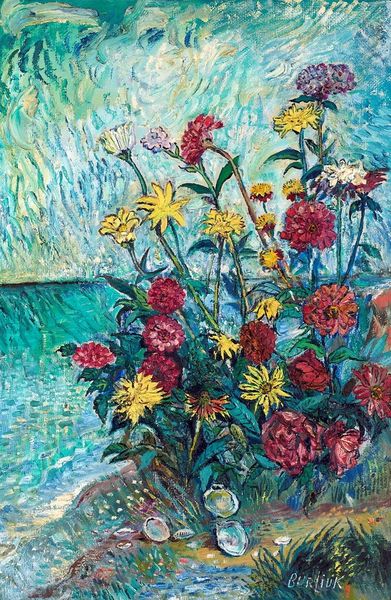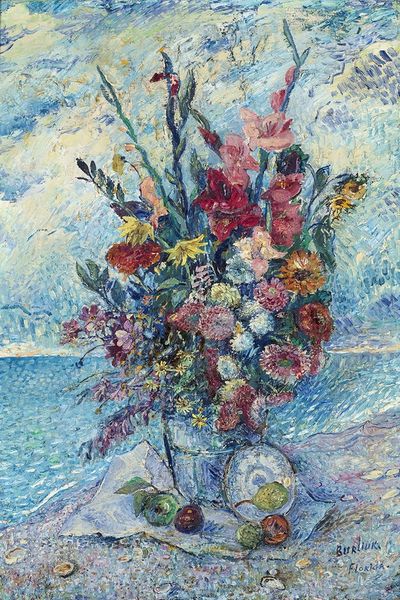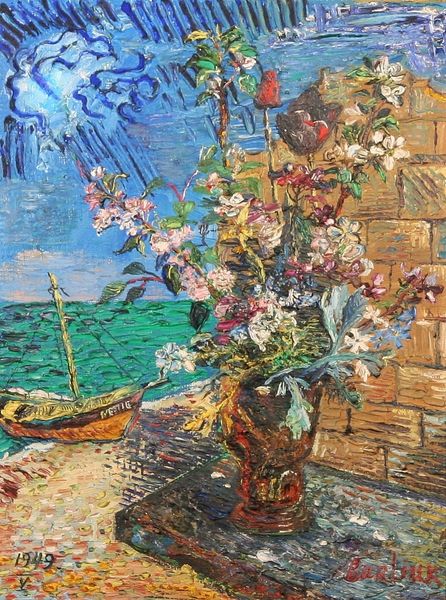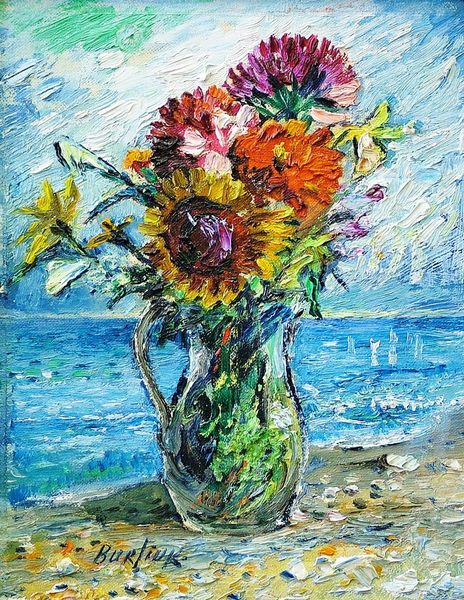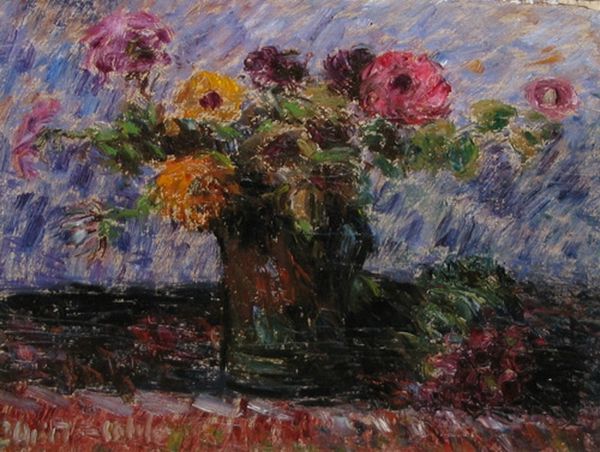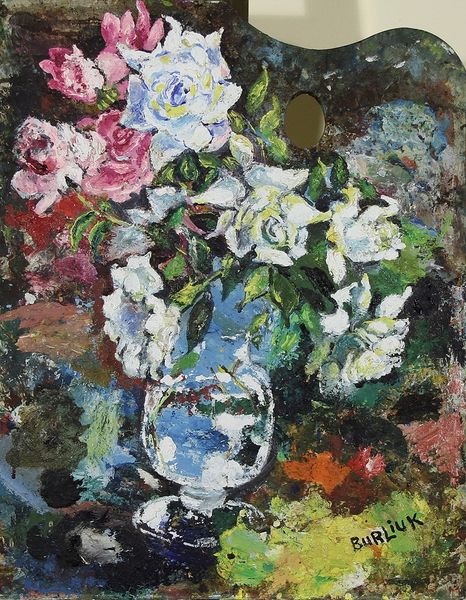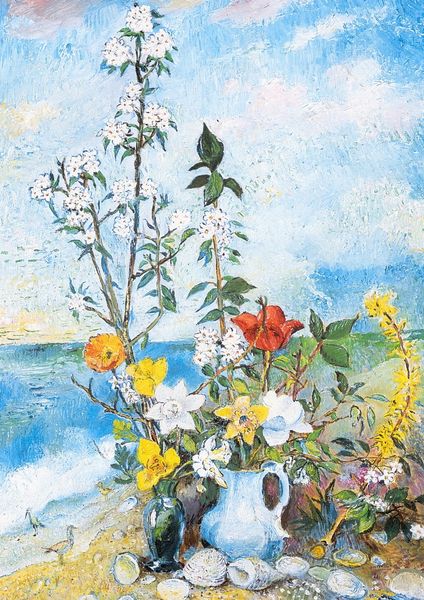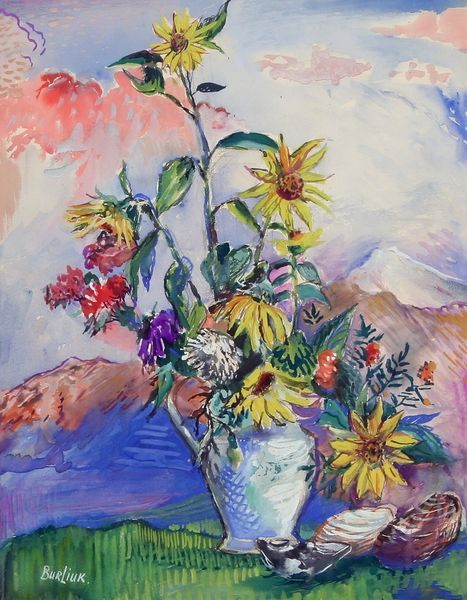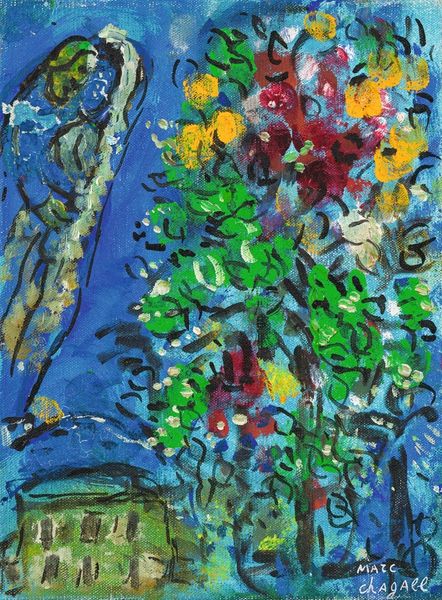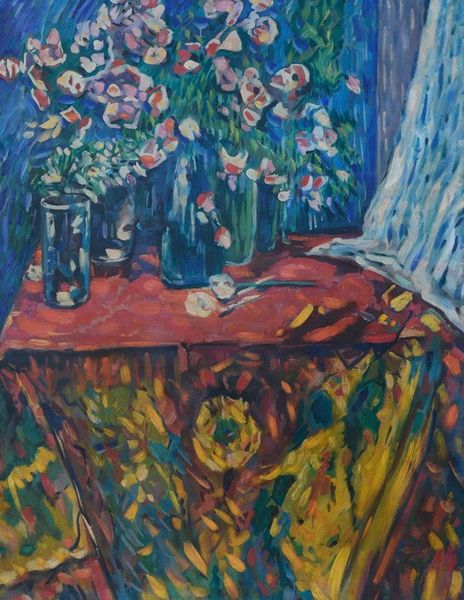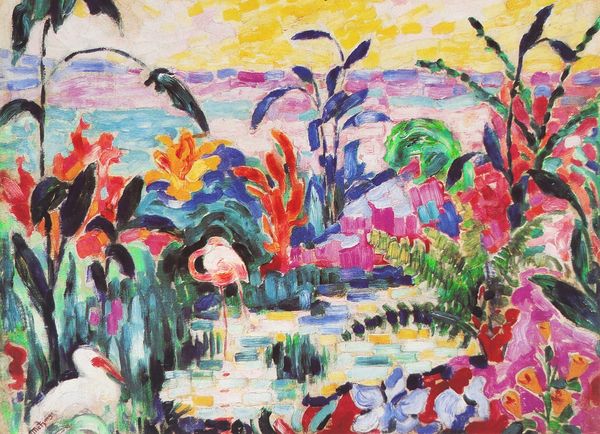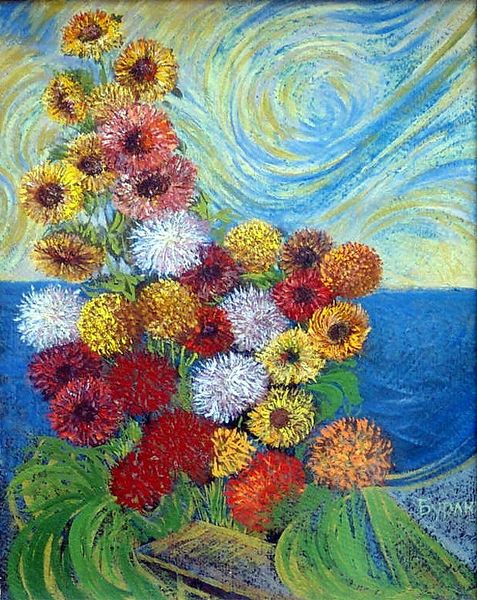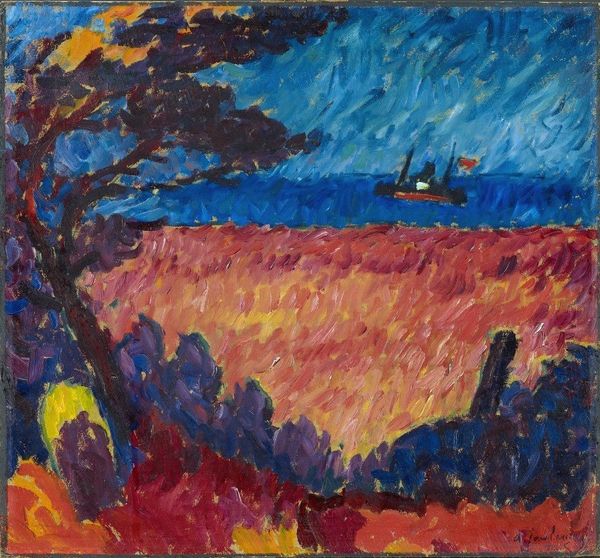
painting, plein-air, oil-paint, impasto
#
painting
#
plein-air
#
oil-paint
#
landscape
#
impressionist landscape
#
figuration
#
oil painting
#
impasto
#
genre-painting
#
post-impressionism
Copyright: David Burliuk,Fair Use
Editor: We're looking at a vibrant painting titled "Landscape" by David Burliuk, painted with oils using an impasto technique. I'm struck by the contrast between the still life elements in the foreground and the breezy coastal scene in the background. How do you interpret this work? Curator: What a fantastic piece to unpack. Beyond the stylistic choices of Post-Impressionism and the vibrant use of impasto, this painting feels like a layered commentary on identity and displacement. Burliuk, with his Futurist leanings, often challenged conventional notions of art and society. Think about it: we have domestic, traditionally feminine objects—flowers, fruit—juxtaposed with a landscape suggesting travel, labor, perhaps even escape. Considering his own émigré status, how might this relate to his personal experience of borders, both literal and figurative? Editor: That's an interesting point. The landscape with the windmill and the boat does evoke a sense of place, or perhaps placelessness? And you’re suggesting that contrast is a key to unlocking these social themes. Curator: Exactly! Consider the context: Burliuk was active during a period of immense social upheaval. His involvement with avant-garde movements placed him in opposition to traditional power structures. By merging genres like still life and landscape, he subverts expectations. How might this defiance manifest itself as a statement on the rigid social categories of his time? What could those shells and fruit represent? Abundance? Discarded refuse? Editor: I hadn't considered the objects as potentially symbolic. I was mostly responding to the colors and the brushstrokes. Curator: Color and brushstrokes certainly create the atmosphere, but what ideologies might be lurking beneath the surface? Are the traditional conventions of landscape and still life unsettled to subtly push against artistic and societal expectations? Editor: Seeing it that way definitely gives the painting more depth. I initially saw it as a pretty landscape, but it’s much more complex. Curator: Absolutely! And that is the power of art; to reflect the social-historical dynamics that define us.
Comments
No comments
Be the first to comment and join the conversation on the ultimate creative platform.
